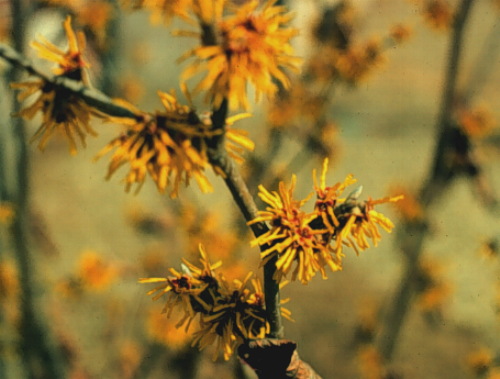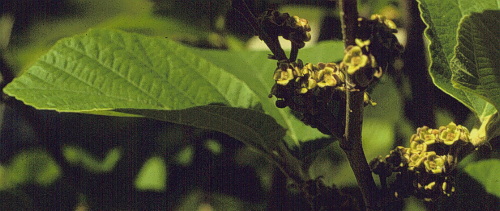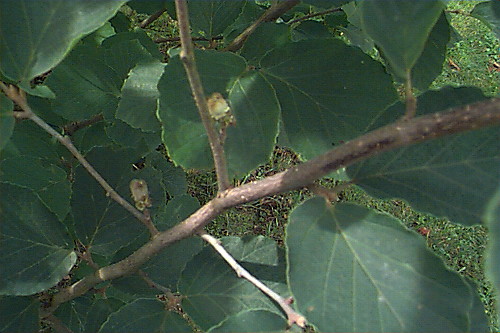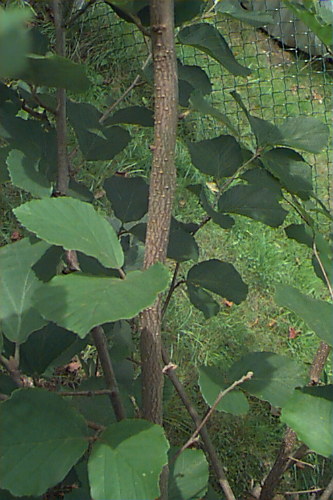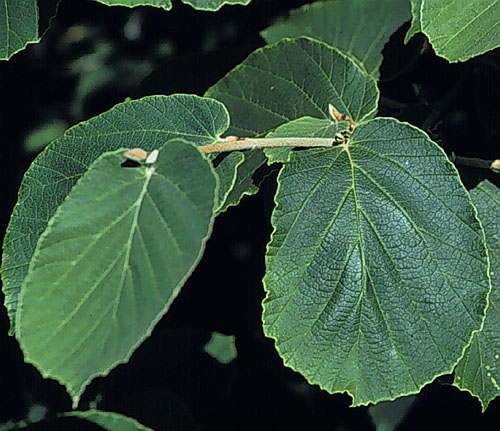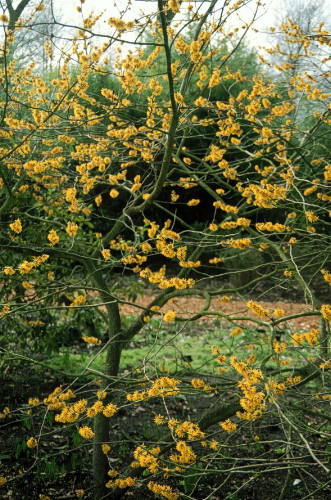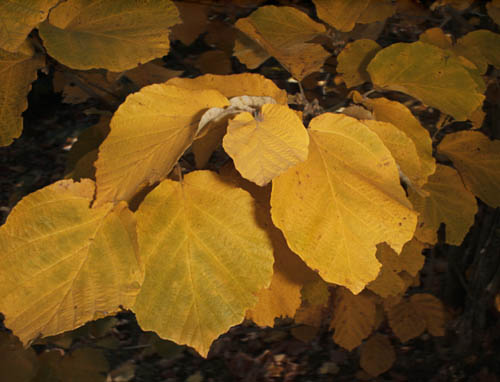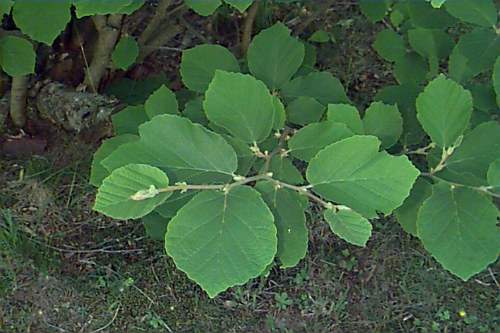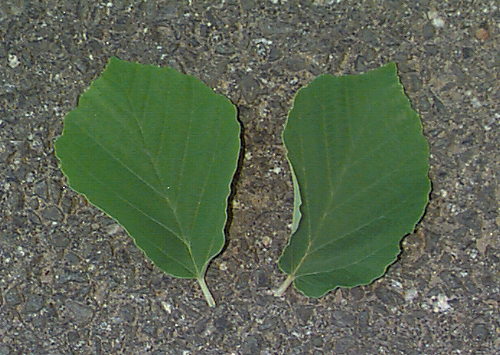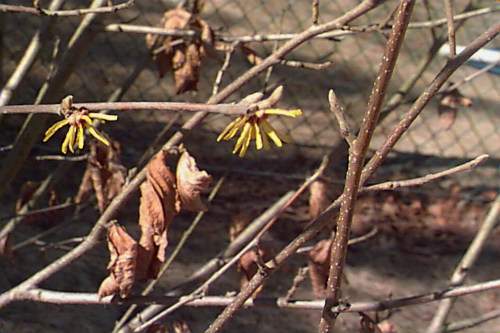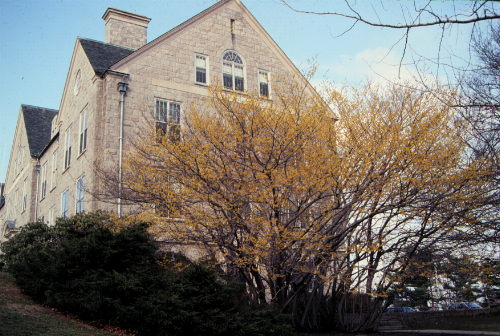Hamamelis mollis
Chinese Witchhazel
Hamamelidaceae
ExpandHabitat
- native to central China
- zone 5
Habit and Form
- a deciduous, large shrub or small tree
- 10' to 15' tall and wide
- multi-stemmed
- upright oval outline in youth
- more rounded and spreading with age
Summer Foliage
- alternate, simple leaves
- 3" to 6" long; somewhat rounded
- acuminate tip
- leaves are a downy, gray-green
- high quality
Autumn Foliage
- yellow to yellow orange
- can be very showy
Flowers
- four, long, narrow petals; spider-like
- opens in March
- flowers open and close depending on weather conditions
- yellow and fragrant
- long lasting
- very showy for late winter
Fruit
- a capsule
- not of major ornamental importance
Bark
- smooth gray to gray brown
Culture
- full sun to partial shade
- moist fertile acidic soil
- protect from harshness of winter due to lack of extreme cold hardiness
Landscape Use
- specimen
- border
- for late winter bloom
- for fall color of foliage
Liabilities
- the least hardy of the commonly-grown witchhazels
- relatively problem free
ID Features
- naked buds
- very pubescent twigs, buds, leaves
- large, showy, yellow late winter flowers
- flower buds present in fall and early winter
Propagation
- by cuttings
- by seed
Cultivars/Varieties
'Brevipetala' - Of questionable ancestry, this plant is perhaps a hybrid. It features yellow blooms with a reddish base that are abundant and somewhat fragrant. While popular, some observers cite its retention of old, dead leaves as a negative aspect.
'Coombe Wood' - This plant is a bit larger in all its parts, with large gold-yellow blooms that are purple-red at the base. The habit is large and broad with large leaves that turn yellow come fall.
'Pallida', 'Sunburst' and 'Westerstede' - These are three fine forms with confused nomenclature. Please see listings under Hamamelis x intermedia.

